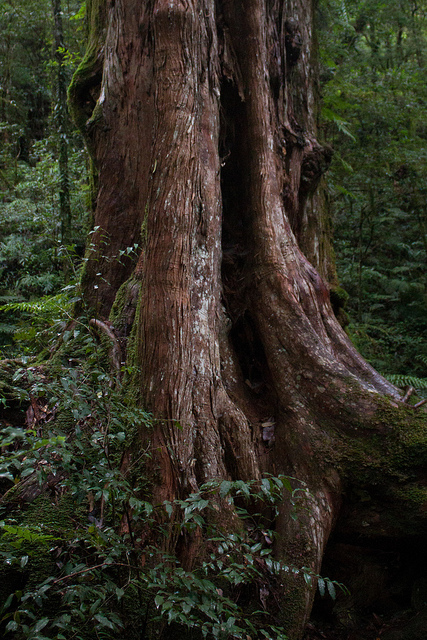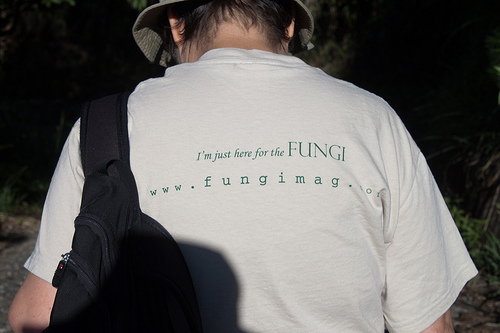Please Eat the Gulf
David Beriss
I have never been an especially observant Jew, but when we moved to New Orleans in 1997, we joined a local synagogue. I was told by a wise Jewish native that good New Orleans Jews observe the Yom Kippur fast and then break the fast with oysters, shrimp or crabs. Except for the fasting part, I have since subscribed to this rule. In fact, whenever I have wondered why I am still here, I remind myself that I am unlikely to find such an abundance of affordable seafood anywhere else I might want to live. I am willing to put up with a great deal when raw oysters can be had for $3/dozen and a pound of fresh shrimp from the Gulf goes for $4 or $5. I may not be a very observant Jew, but I am having a great time being an observant New Orleanian.
Or I was. When the BP Gulf oil spew started in April, we all began to worry. As the oil spread, more and more of the Gulf coast was closed to oyster harvesting and fishing. Prices at local restaurants rose and some even stopped selling local seafood. Efforts to stop the flow of oil kept failing and BP, parish, state and federal officials seemed uncertain of the best ways to prevent the spread of destruction. Scientists suggested that the dispersants being used to prevent the oil from reaching land might be even more dangerous to the environment—and to people working on the cleanup—than the oil itself. Much of the local seafood economy, from commercial and sport fishing to processors and distributors, ground to a halt. When P and J Oyster Company, a New Orleans oyster supplier since 1876, announced it would cease shucking operations and lay off workers in early June, it was hard not to think that an era was ending. Every time I bought shrimp at our local fish market or enjoyed soft shell crabs at a restaurant, I felt lucky. What would we do without it?
Seafood is a key part of the local cuisine in New Orleans. It has also been affordable and abundant here, so that crab, oyster, shrimp and fish remain available to people across class lines. Seafood markets can be found in most neighborhoods and they often accept food stamps. People know what to do with seafood too. One of the best ways to start a conversation in New Orleans is to mention that you have some speckled trout or a few pounds of shrimp and you want some ideas about how to prepare them. The answers you get will be better than anything you can find on epicurious.com.
One of the key complaints of food activists in the U.S. has been that Americans are alienated from the sources of their food. The burger meat you pick up at the grocery store is hard to trace back to a cow—if, indeed, it actually came from just one cow. Something like 80% of the seafood you get at your local store is imported. Much of it is raised or harvested in ways that are not sustainable. Some of it may not be good for you to eat.
In New Orleans, we generally know where our seafood is from. Restaurants make a point of serving local seafood. We can get our shrimp directly from the shrimpers, selling from an ice chest in the back of a pickup at the side of the road. Or we have a relationship with the folks at the local market and we trust them to know where the seafood comes from. Often, fish become part of the kinds of informal exchanges that build relationships. A few days after we first moved to New Orleans, our neighbors showed up at our door with a gift of black drum they had caught. Since then, we have often benefitted from the fishing success of friends. From crawfish boils to holiday dressings and gumbos, seafood is not just about food. We build relationships with seafood.
We have also tried to grow the seafood industry by making it a desirable brand. Competition from cheap imports has made it increasingly difficult for Louisiana shrimpers, fishers and oyster growers to make a living. The political environment and fear of pollution and disease—especially the risks associated with raw oysters—have created additional difficulties. In 2009, the U.S. Food and Drug Administration proposed severely limiting the months when unprocessed oysters from the Gulf could be sold, claiming that oysters posed too much of a health risk to be consumed during warm months (from April to October, in their proposal) even though very few people ever get ill from eating oysters. Local oystermen suspected lobbyists from West Coast producers were behind this effort, since Louisiana supplies about 40% of all the oysters consumed in the U.S. and West Coast oysters are far more expensive. Effective lobbying by the state’s congressional delegation succeeded in stopping the FDA’s rule. One strategy has been to promote the idea that Louisiana seafood is distinctive, a product of terroir, much like a fine wine or an artisanal cheese. This has been pursued by the White Boot Brigade and by local Slow Food activists, who have taken Louisiana shrimp to New York and Chicago and persuaded famous chefs to put it on their menus. The BP oil spew makes it much more difficult to suggest that the products of our terroir are especially desirable.
And oil complicates things in other ways. The economy of south Louisiana is deeply tied to the oil industry. Offshore oil drilling got its start in Louisiana. In a state with a poor education system, the industry has paid high wages and provided training and education for workers. It has contributed enormously to the state’s coffers. We all know people who work in the oil industry as well. In fact, many people work in both, sometimes trawling for shrimp, while at other times working on offshore rigs or in a wide range of other capacities. Our world famous annual Jazz and Heritage Festival is officially “presented by Shell” on all of its advertising. Morgan City, a town on the Gulf coast, has hosted the annual Louisiana Shrimp and Petroleum Festival for 75 years. At the Audubon Aquarium of the Americas in downtown New Orleans, one of the main exhibits is the enormous Gulf of Mexico tank, containing a scale version of an offshore oil rig and dozens of the species that thrive on the artificial reefs created by the rigs.
This puts us in a terrible bind. The federal moratorium on deep water exploration in the Gulf has been the object of much protest here precisely because it puts thousands of jobs at risk. Some of those are the very jobs that people might seek when they can no longer make a living in the seafood industry. In addition, we all know—or we should know—that the oil industry has played a key role in the destruction of the Louisiana coast over the last several decades. We lose roughly a football field of wetlands to coastal erosion every 30 minutes in Louisiana. Much of that is a consequence of dredging for thousands of miles of canals and pipelines to service the oil industry since the 1940s. The long-term threat of coastal erosion is much more significant than the BP oil spew. There are other environmental threats too, like the massive dead zone created by farm runoff where the Mississippi river flows into the Gulf of Mexico.
Last Thursday, I attended a Gulf seafood “eat in” at the Crescent City Farmer’s Market. Several local chefs made dishes with local seafood. Food scientist and advocate Gary Nabhan distributed copies of a pamphlet detailing some of the foods and foodways that are at risk in the Gulf. The pamphlet contains articles by food activists, fishers, food writers, chefs and others from the region and provides a pointed illustration of some of the ways seafood is tied to the culture and economy of this region. It shows that the BP spew is only the latest episode in a series of ongoing ecological and economic disasters that threaten one of the last successful American fisheries and one of the great food cultures of the world. Erosion and wetland loss diminish our ability to survive hurricanes, destroy our fisheries and threaten to destroy communities throughout the region. At the same time, cheap seafood imports are undermining an industry that supports thousands of people and a culture in which seafood plays a central role. Ecological activists in New Orleans have been working since well before the spew started to promote restoration of the wetlands. Food activists have struggled to find ways for the seafood of America’s “third coast” to be recognized as a great national resource. One of the latest initiatives is have New Orleans declared a “UNESCO City of Gastronomy,” in an effort to earn international recognition for the region’s culinary heritage. The region needs this to be a wake-up call for the rest of the United States.
On Friday, BP finally shut off the well. As I write this, the oil seems to have stopped flowing into the Gulf of Mexico, although it is uncertain if this is permanent. Maybe the fisheries will recover over the next few years. Maybe the damage is not quite as extensive as we feared—the state reopened some areas to sport fishing over the weekend. Should we be optimistic about the future or has the oil put a permanent stain on our seafood and culture? People in south Louisiana are resilient, but this is a culture and an economy that often seems to be on the verge of collapse. But one thing we ask of you: keep eating seafood from the Gulf of Mexico. If it is in your stores, it is safe to eat. As local chef and radio personality Poppy Tooker often reminds us, we have to “eat it to save it.” We hope you will.


